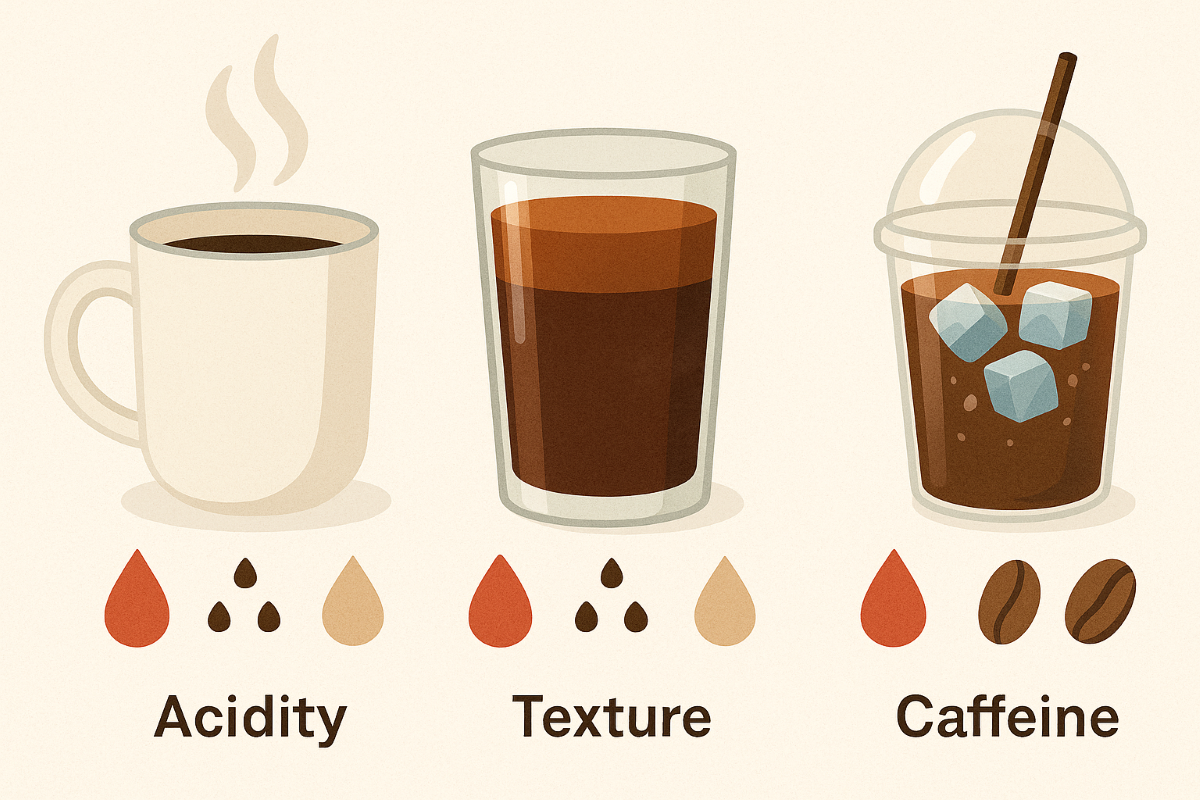
Health Differences Between Hot, Cold, and Iced Coffee
Dubai – Qahwa World
A recent study, drawing on data from Free Well Health and scientific research published in the journal Foods (Thomas Jefferson University – 2020), revealed clear differences between hot, cold, and iced coffee in terms of health value, flavor profile, and caffeine levels.
The study noted that all three types contain important antioxidants, but choosing the most suitable one depends on individual factors such as caffeine tolerance, preparation method, and additives like sugar and milk, which can increase calorie content and turn coffee into something closer to a liquid dessert.
Acidity and Nutritional Value
The research showed that cold brew coffee is slightly less acidic than hot brew at the same roast level, but the difference did not exceed 0.2 to 0.34 pH units. Darker roasts had the most significant effect in reducing acidity, making them a better choice for those sensitive to acids.
Hot coffee was also found to be richer in antioxidants, with levels remaining stable even with darker roasts. In contrast, antioxidant capacity in cold brew decreased as roast levels darkened. The study also revealed that hot coffee contained higher total dissolved solids (TDS), giving it a fuller body and more pronounced flavors, while cold brew offered a smoother texture and lower acidity, making it gentler on the stomach and teeth. Iced coffee, meanwhile, is essentially hot coffee that has been cooled and served with ice, offering refreshment without major changes in nutritional value.
Caffeine content remained similar across all three types when brewed in the same proportions, with averages of about 205 mg in a large cold brew compared to roughly 165 mg in iced coffee, while hot coffee was closer to the iced version. This indicates that cup size and coffee-to-water ratio play a bigger role in caffeine strength than the brewing method itself.
What Does This Mean for Coffee Lovers?
For those who want less acidity: A medium or dark roast is the best option, with cold brew providing a slightly lower acidity than hot.
For those focused on antioxidants: Hot brewing remains more consistent across roast levels.
For those seeking smoothness and mildness: Cold brew delivers a softer texture and lower acidity but is generally less concentrated.
For those worried about caffeine: There’s no major difference between hot and cold brews; cup size and ratio matter more.
In conclusion: The main differences among hot, cold, and iced coffee lie in acidity, antioxidant content, and texture, while caffeine remains largely unchanged — giving consumers the freedom to choose based on taste preference and health needs.






